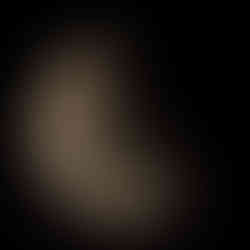A "Partial" Success: Lunar Eclipse Event – Sunday 7 September 2025
- Mike Meynell

- Sep 6, 2025
- 4 min read
Updated: Sep 8, 2025
Our first Blackheath observing session of the new season promised to be a memorable one, with a total lunar eclipse coinciding with moonrise. Despite the weather being far from ideal, the evening delivered a fantastic mix of science, atmosphere, and community – and, eventually, some truly beautiful views.
Setting Up Under Uncertain Skies
I arrived just before 6pm to find Alec, Tony, and Eddie already setting up, along with the BBC News team, who were covering the event. With thick high cloud dominating the eastern horizon, conditions looked far from promising, but forecasts suggested we might get clearer skies later in the evening.

With the Moon rising in eclipse just after 7.30pm and totality ending at 7.52pm, we faced a tight window. Seeing a total lunar eclipse at moonrise is challenging at the best of times – the Sun has only just set, the Moon is low, and any haze or terrain can block the view. Tonight, it was going to take some luck.
Despite the uncertainty, setup continued, and by 7pm we already had around 20 telescopes in position. Over the next half hour, more arrived from both volunteers and members of the public, and by the peak of the event we estimated around 30 telescopes on-site, plus plenty of binoculars and cameras.

Crowds, Cameras, and Community
The atmosphere on the heath was lively and expectant. The BBC crew were interviewing attendees, while several Royal Observatory Greenwich astronomers joined us, with Jake Foster handling the bulk of the media questions. The BBC correspondent, Georgina Rannard, later sent us a lovely note describing it as “a great mix of keen astronomers and passers-by” and praising the “fantastic atmosphere” of the evening.
To maximise visibility of the low-rising Moon, I encouraged attendees to set up telescopes in a long line stretching almost to Shooters Hill Road. It was an impressive sight, with tripods and scopes silhouetted against a dramatic sunset sky. Initial crowd estimates of 300 people were quickly revised upwards after comparing notes – we now believe 400+ people were in attendance during the peak of the event.

Smart Telescopes in Action
While many volunteers were helping visitors at the eyepiece, Yvonne, Richard, and Paul were busy imaging the eclipse using their smart telescopes – a Seestar S30, Seestar S50, and Dwarf III. These setups attracted plenty of interest from passers-by curious about how modern astrophotography works.
Yvonne captured the standout image of the night – a perfectly timed shot of a plane transiting the Moon during the partial eclipse.
Waiting for the Moon
Although the skies began clearing overhead and to the west, a stubborn bank of low cloud sat on the eastern horizon, directly where we needed to look. The rising terrain towards Shooters Hill meant we wouldn’t see the Moon until it was at least 1 degree above the horizon. As 7.52pm approached and totality ended, it became clear that even at 2.5 degrees altitude, the Moon remained hidden.

I encouraged people to stay, as the partial eclipse continued until nearly 9pm, giving us a chance of catching the later stages. Tim described the early part of the evening as “a bit claggy”, but spirits remained high, helped by the sense of occasion and the buzz among the crowd.
The BBC team reluctantly departed around 8.15pm to file their report for the 10 o’clock news, missing what happened next. At 8.25pm, the clouds began to thin, and the partially eclipsed Moon finally appeared through the haze. Seeing it glow dimly behind the high cloud gave it an ethereal, atmospheric quality – a moment well worth the wait.



With so many visitors eager to see the Moon, Alec found himself running two queues on his setup simultaneously – one on the main telescope and another on the finder scope – a brilliant solution that kept the lines moving and ensured more people got a chance to look.
Back to the Stars
After the eclipse, many attendees drifted away, leaving the hardcore observers to make the most of the clearing skies. Saturn was the highlight of the night, and it was wonderful to give several visitors their first-ever view of the planet through a telescope.
Later, we turned our scopes to deep-sky favourites, including the Dumbbell Nebula (M27), Ring Nebula (M57), and the Andromeda Galaxy (M31). I also used my SmartEye eyepiece for the first time at a public event, and it performed brilliantly, giving enhanced views of these objects through my regular 100/800 refractor – several visitors were amazed at the detail revealed.

A Strong Start to the Season
Despite missing the total phase of the eclipse, the evening was a real success. We had hundreds of attendees, BBC coverage, fantastic volunteer support, and eventually some striking views of the partial eclipse and Saturn. Yvonne’s plane-transit image capped off a memorable night.
With our regular Blackheath observing sessions resuming next weekend, we hope to see some of our many new visitors returning to join us under the stars.





































Comments